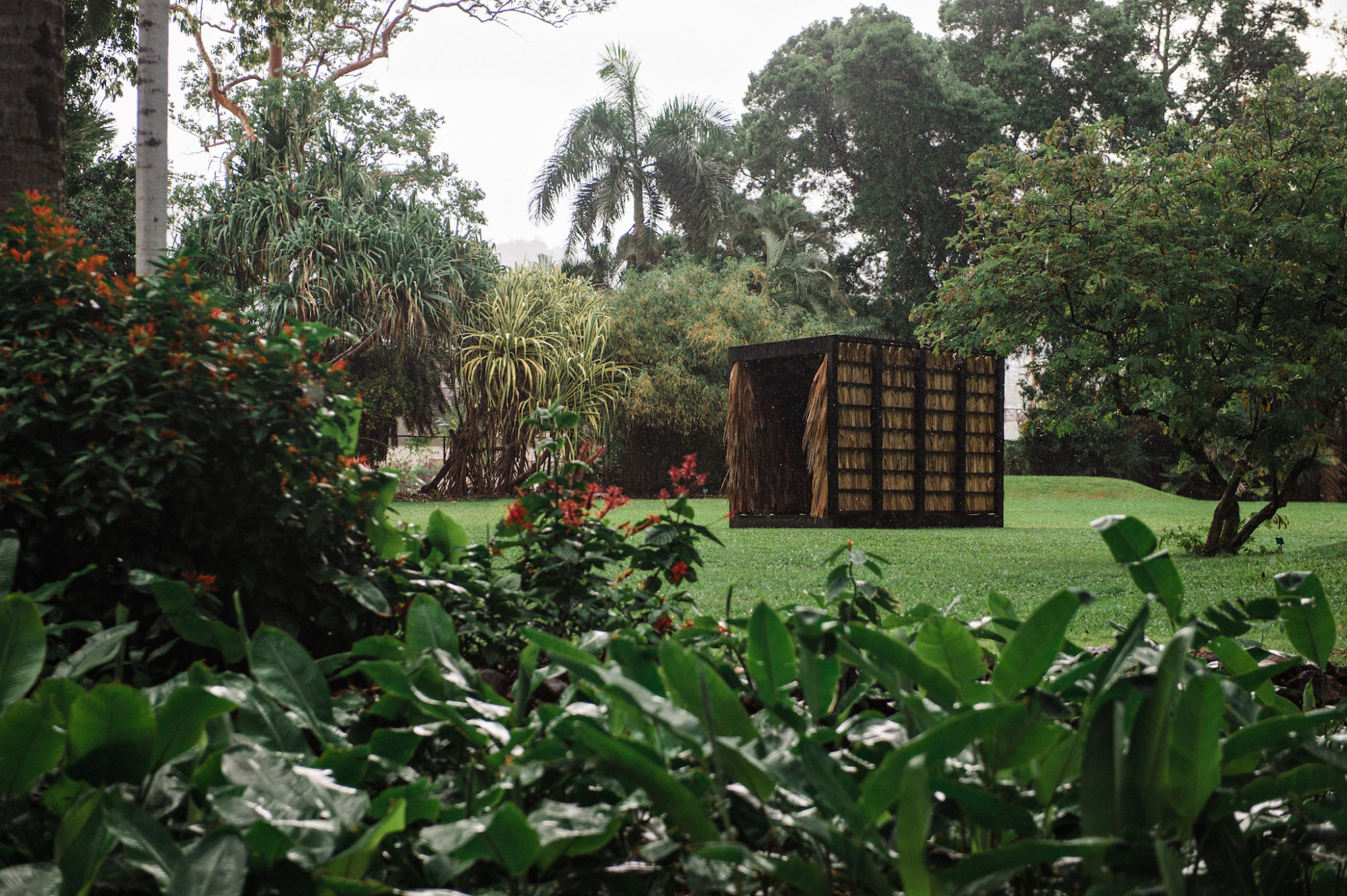Artist and architect Sean Connelly dreams of building a familiar future for Hawai‘i.
Text by Blaine Tolentino
Images by John Hook
Sean Connelly thinks about what Hawai‘i will be like 1,000 years from now. He is sanding a foam model of an ahupua‘a, a traditional Hawaiian land division that often extends from mountain to sea.
Specifically, the surface expresses the topography of Waikiki, the likeness of which Connelly fabricated from a satellite data image. Onto this structure, he will project maps he assembled from data gathered on streams, storm- water channels, and buildings.
When he shares this model with legislators, students, and viewers of his art installations, they will gasp. “See,” he will say, “what it means for an island to be a city, what it could look like to have the ahupua‘a back?”
Connelly’s envisioned futures are filled with innovative designs that work with what existed in the natural world before people arrived. For Contact 2017, an art exhibition at the Honolulu Museum of Art School, Connelly created Three Houses, which featured three stark tabletop structures. One had a fishpond beneath it, to provide its residents with a sustainable food source; another featured a building exterior that would replicate and blend in with its environment; the third had a structure that filtered freshwater into an artificial onsite aquifer. The depth and layers of such artistic creations, which are rendered with architectural detail, reveal the conscientiousness of Connelly—a nebulous visionary who dreams of a Hawai‘i that once again celebrates water in its many forms, and honors the capacity and sustainability of the land.
Having grown up in Hawai‘i, at the base of the Ko‘olau mountains on O‘ahu’s east side, Connelly sees the ocean as a critical resource for the islands. He recalls a time, as a teenager, when the water was contaminated at one of his favorite surfing spots in Waikiki—the results of a massive sewage spill, which had created hazardous swimming conditions for ocean goers. Even after the water was deemed safe, those who spent time in the water knew it wasn’t the same; the water tasted metallic.
But it wasn’t until Connelly took a college class trip to Kaho‘olawe—a Hawaiian island that has spiritual significance, but for decades served as a training ground and bombing range for the U.S. military—that he began to see the city as a land division similar to an ahupua‘a, or an island. He realized that all are used to distinguish populations, to manage resources and access. And he saw how the original inhabitants of the islands had to consider their divisions’ limited resources to survive, just as planners try, and sometimes fail, to do when developing densely occupied urban areas.
Connelly went on to get a doctorate in architecture from the University of Hawai‘i, then earned his master’s degree in urban development at Harvard University. What came of his studies and contemplations is more than art, and more than architecture.
His design theories are rigorous. The resources from which his projects spring are governmental or proprietary data, which he collects scientifically. He proposes the ocean as being the center of all things in a video diagram of O‘ahu turned inward, with shorelines facing each other, asking the viewer to see that, for many years, the ocean was at the core of survival for not only the indigenous population, but also for migrant generations that would follow European contact.
He has mapped bird migration paths across all oceans, as phantasms of oceanic voyaging. These are chapters of an upcoming atlas he is creating, and a way for Connelly to bring his theories into the visual world. In the next year, he is assembling an anthology about urbanism and Oceania called Hydraulic Islands.
Connelly began building these visions in Honolulu in 2013. First was A Small Area of Land (Kaka‘ako Earth Room), for which a community of volunteers helped Connelly shape 32,000 pounds of soil and sand into an angled dirt sculpture standing 7 feet tall and 9 feet wide.
A year later, he debuted Land Division at the Honolulu Museum of Art, a towering sculpture of spindly trunks of invasive strawberry guava trees that was built as if it had been cleaved in half. His third sculpture, Thatch Assembly with Rocks (2060s), rested in an open eld at Foster Botanical Garden for two months in early 2017, as part of the Honolulu Biennial.
The assembly was a black structure dressed in loulu palm fronds, the Hawaiian Islands’ only native palm species, but was built as the reverse of a traditional Hawaiian hale—the foliage was layered to create walls, instead of a thatched roof—to celebrate the utility and techniques of island-based architecture.
Most recently, for Three Houses, Connelly looked to the ahupua‘a as a way to address the mounting problems of modern island life, such as the lack of affordable housing and the high cost of living.
His imagined solutions imply that sometimes, for cities to flourish, the people living within them may need to start over, redefining their values, aesthetics, and remembering the depth of the land they live upon. From dystopia, a utopia could be built.
For Connelly, the best future will come from preserving the irreplaceable resources that make Hawai‘i a vision to behold.
Explore Connelly’s data, projections, designs, and collaborations at hawaii-futures.com and ao-projects.com.



